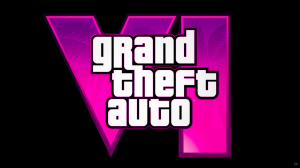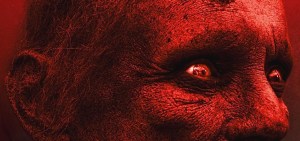Tonight’s episode of The Flash introduced a LOT of new concepts, a LOT of new characters and included a LOT of Easter eggs.
Videos by ComicBook.com
So many that we probably missed at least a few.
So…what did we miss? What did we see? Read on…!
THE FLASH OF TWO WORLDS
Even the title of this episode is a DC Comics reference; “The Flash of Two Worlds” is the name of the first crossover between Barry and Jay, which took place in the Silver Age and introduced the multiverse into DC Comics.
It took place in The Flash #123. Not only does the title get a name-drop from Sand Demon in the third act, but even the cover (pictured above) gets an homage in the episode.
EARTH-2
Jay Garrick comes to The Flash in full today, complete with his original backstory. We’ll get more into his origin later, but his hometown?
It’s on Earth-2, a parallel world in the DC Multiverse that seems very similar to the “main” DC Earth in most ways.
It’s the home of the Justice Society of America, Golden Age superheroes who were (in the comics) precursors to the often-more-familiar Silver Age versions like Barry Allen.
ZOOM
This seemingly confirms our theory about Clariss.
While Thawne is generally discussed as the first Reverse-Flash, that’s because Earth-1’s continuity has always taken priority since the Crisis on Infinite Earths. There was, in fact, a Golden Age Reverse-Flash in the pages of Jay Garrick’s Flash comics as well. A blue-masked, self-obsessed doppelganger of Garrick, Edward Clariss is generally called The Rival, and he actually might be our best candidate for a TV villain.
Why?
Well, there’s all that blue lightning in the trailers for The Flash from Comic-Con, for a start.

Many fans have wondered what significance the blue lightning might have, and it’s something that’s appeared in The Flash comics periodically over the years. More often than not, fans have associated it with Cobalt Blue, Barry’s literal evil twin brother, who appeared during Mark Waid’s run on The Flash and who was actually an ancestor of Eobard Thawne. A lot of people — occasionally myself included — thought Eddie Thawne might turn out to be Malcolm Thawne, better known as Cobalt Blue, in the TV show.
There have been other times, too; in The Flash (1990), John Wesley Shipp actually played a twisted clone of The Flash called Pollux, who wore blue and had a blue speed trail behind him. Barry in recent years has gone for blue lightning twice: once during the Blackest Night and Brightest Day events when he could be seen wearing a Blue Lantern ring and uniform, and once during the Futures End event and its fallout, as an “evil” Barry from five years into the future was introduced with a blue costume and powers. That version of Barry was instrumental in the introduction of Wally West to the post-Flashpoint DC Universe, so when Wally was announced for Season Two of The Flash, it was easy to draw that connection.
But probably the most obvious answer remains Clariss.
Clariss was a professor at the university attended by the Earth-2 Flash, Jay Garrick. He believed he had recreated the formula that gave Garrick his speed, but the scientific community didn’t believe him, driving him to madness and crime.
In the comics, the formula Clariss wanted credit for was a drug called Velocity 9, later retconned to have been invented by Vandal Savage — who, coincidentally enough, will serve as the primary antagonist on DC’s Legends of Tomorrow in its first season. It isn’t, as far as I can tell, tied to the mathematical formula spoken by Johnny and Jesse Quick in order to gain them access to the Speed Force, although with Jesse joining The Flash this year, it may not be entirely unrelated on TV.
Clariss took to the streets in a darker version of Garrick’s costume, and instead of trailing yellow lightning behind him when he ran, his blue, possibly becuase of the darker pants and blue face mask he wore. Clariss’s formula proved to be temporary, and he was defeated when it was expended. He reappeared a few months later, and in battling the Flash, reached light speed and vanished.
Clariss, it seems, had inadvertently trapped himself in the Speed Force, where he remained for decades before being retrieved by Johnny Sorrow, who invited him to join the new Injustice Society — in a storyline written by The Flash executive producer and DC Entertainment Chief Creative Officer Geoff Johns, the driving force behind Zolomon. He would appear in another, Garrick-centric storyline in The Flash during the Johns era.
After returning from the Speed Force, The Rival was reinvented to have his face blurred by speed motion rather than simply wearing a mask — something that many of Johns’ speed-powered villains would echo. This could explain why Tony Todd will be only the voice of Zoom, rather than having one actor do both.
After his escape from the Speed Force, Clariss was able to possess other bodies, being that he was now a being of pure energy, which may also explain the need for a dynamic voice actor to do at least part of the work.
“THE FACE OF DEATH”
Black Flash?
That’s a possibility, too, and certainly it’s interesting that the face of Zoom seems so grotesque.
In the comics, Black Flash isn’t a villain, really, so much as he is a force of nature, a kind of Grim Reaper for speedsters.
It would be interesting to see whether part of his mythology gets incorporated…
SAND DEMON

Eddie Slick, better known to comic book readers as the Firestorm villain Sand Demon, will appear on the forthcoming second episode of The Flash Season Two, titled “The Flash of Two Worlds.”
In the photo above, Teddy Sears is credited as Jay Garrick in the official caption from The CW, while Kett Turton is identified as as Eddie Slick.
A look-alike of Martin Stein, he was a boxing promoter who sold steroids and had mob ties. When their operation collapsed, the mob blamed Slick and buried him alive, but he somehow discovered powers and was able to manipulate sand a la the Spider-Man villain Sandman.
The character was created by Gerry Conway and Joe Brozowski, and first appeared in Firestorm #51 in 1986. He lasted just two years and died in Firestorm #75.
HEAVY WATER
Jay Garrick’s origin, featuring experiments with either hard or heavy water (depending on which version you read) might sound silly, but we’re keeping it.
Because this is The Flash, dammit.
God, I love this show.
“TO INFINITY”
According to Martin Stein, we aren’t looking at a 52-world multiverse, but an infinite one.
That’s certainly an interesting theory to posit.
The infinite multiverse was only reinstated recently, following the events of Convergence, after it was destroyed and replaced first by one, and later 52, earths in Crisis on Infinite Earths.
HUDSON UNIVERSITY
Patty Spivot went to Hudson University, according to her high-pressure sales pitch on Joe West early in the episode.
In the DC Universe,
Hudson University is located in the city of New Carthage, New York. Notable former students at Hudson University include Dick Grayson, who only attended for one semester, Professor Martin Stein, Crystal Frost, Louise Lincoln, and Duela Dent.
It’s also where Jason Rusch went and worked with Martin Stein on F.I.R.E.S.T.O.R.M. in the TV shows.
BLACKGATE PENETENTIARY
Blackgate is one of the DC Universe prisons that isn’t the much-used Iron Heights.
It’s been used in the Arkham series of games, and in the Gotham TV series.
MONTY PYTHON AND THE HOLY GRAIL
You know why we know Patty Spivot is one of the good guys?
Because she and Barry bonded over Monty Python and the Holy Grail.
Awesome.
GREEN ARROW
Nothing quite as fun as when the shows interact like this.
Tonight’s episode of The Flash acknowledged the “Green Arrow” broadcast from the end of last week’s episode of Arrow.
THE MARDON BROTHERS
Patty comes to The Flash as somebody who has been kind of existing in the background the whole time.
That is to say, her motivation for going after evil metas is that the Mardon Brothers — the villains from The Flash pilot — killed her father.
It makes her feel like part of the fabric of the world.
VIBE
This is the first time Cisco Ramon uses his Vibe powers on purpose.
He also explains them to Professor Stein and says he “gets a vibe” before using them.
We’ll be focusing on him a lot in the coming episodes, according to showrunners, so expect to see this develop more.
WOODRUE GREENHOUSE
Apparently, Central City has a greenhouse named for Jason Woodrue, the Fluoronic Man.
Could we see the character? It’s hard to say. It wouldn’t be his first appearance in live action, though, as evidenced by the image above, from 1997’s Batman and Robin. He was also referenced but not seen in the Swamp Thing TV series.
WAR OF THE AMERICAS
Jay says his father wore his helmet in the War of Americas…but what’s that?
Well, it’s a fictional conflict that took place in the world of Jack & Bobby, a 2004 television show from Arrow and The Flash executive producer Greg Berlanti (along with former Green Arrow writer Brad Meltzer). One of the writers on the series was Marc Guggenheim, Arrow‘s showrunner, which makes this Easter egg a real family affair.
52 BREACHES
For a time, there were 52 worlds in the DC multiverse. Could Professor Stein’s theory be wrong? Or at the very least, could each of the breaches go to a different earth, and not necessarily all to Earth-2?
HARRISON WELLS
The Earth-2 version of Harrison Wells appears to have shown up in the bumper for the episode.
But is he good, is he evil? What’s going on there?
We’ll see soon enough…!


























